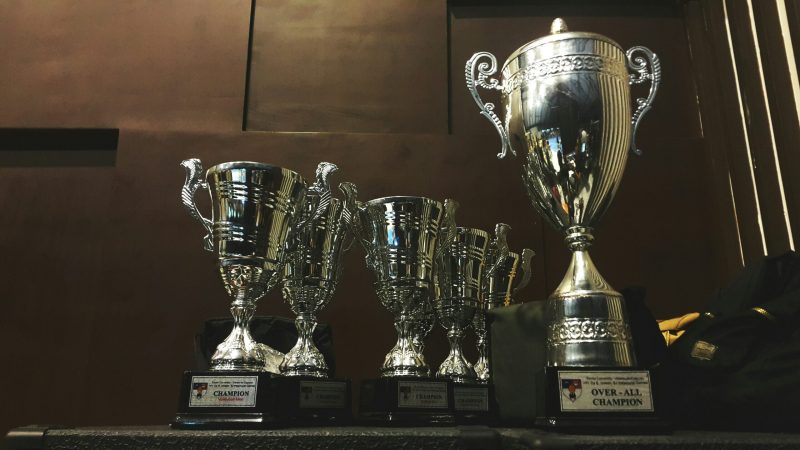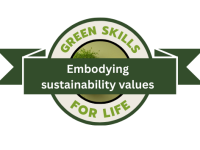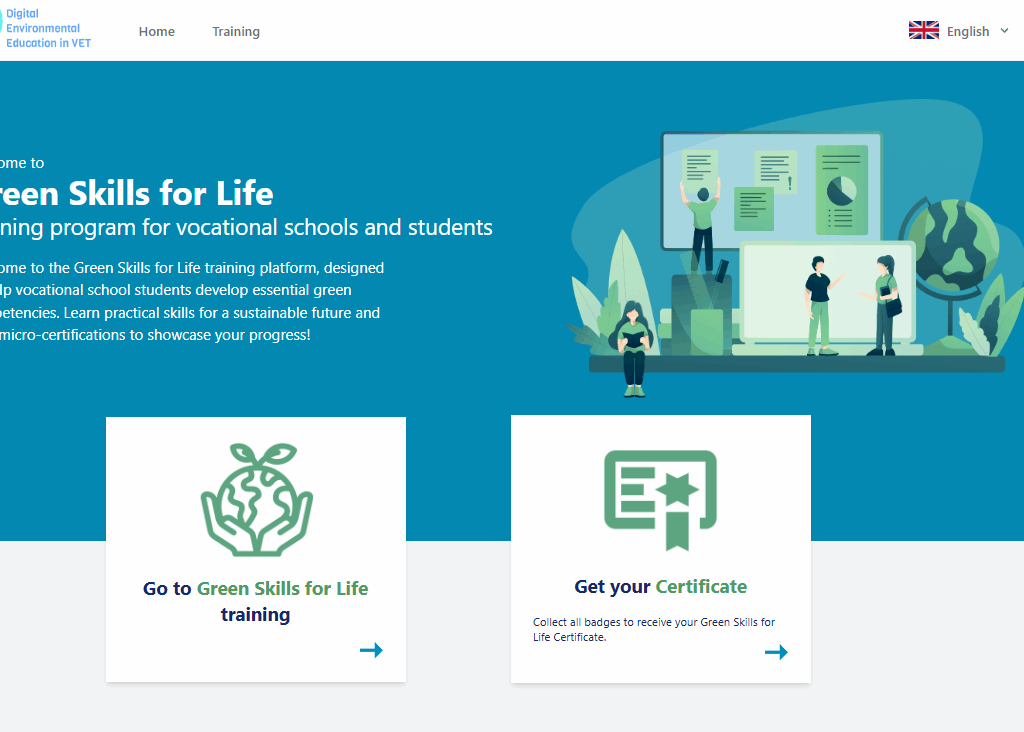Motivating Adult Learners Through Recognition of Small Achievements

Author: Lucie Brzáková
Published: 04/05/2025
What keeps adult learners motivated in an educational path? For many, it’s the recognition that every step counts.
In the DEED project (Digital Environmental Education for VET Learners), we set out to support the green transition through practical microlearning tools. But early in our work, we faced a familiar challenge: How do we help learners feel acknowledged and stay motivated when lessons are short and non-formal? Our answer: microcertification and digital badges.
What began as a motivational experiment quickly turned into one of the most appreciated components of the project — by learners, teachers, and institutions alike.
Why microcertification?
In traditional education, recognition often comes at the end: a certificate, diploma, or grade. But adult learners, especially those in non-formal or continuing education, often face long gaps between effort and reward. This is where microcertification becomes a game changer.
Microcertification is about recognising small, meaningful learning achievements. Learners complete bite-sized lessons or tasks, and in return, they receive immediate proof of progress — often in the form of a digital badge.
This model fits perfectly with microlearning. It gives learners a sense of completion after every short module, and the flexibility to build their competence in steps.
DEED’s approach: Digital badges for green skills
In the DEED project, we developed over 215 microlessons on green competences — covering topics like circular economy, biodiversity, food systems, and sustainable consumption. These lessons are visual, interactive, and designed to take 15–30 minutes each.
To accompany them, we launched a microcertification platform. Here’s how it works:
– Learners browse and complete microlessons through the DEED Training Forum.
– After completing a selected number of lessons from a topic cluster (e.g. “Reducing Waste” or “Protecting Biodiversity”), they take a short quiz.
– If they pass, they receive a digital badge representing their achievement.
– These badges can be saved, printed, or shared online (e.g. LinkedIn, e-portfolios).
The badges follow a consistent format and include metadata such as issuing organisation, date, competence area, and learning criteria — ensuring transparency and portability.



Why badges work
Digital badges are not just icons. They tell a story. For adult learners especially, they offer several key benefits:
- Motivation through progress
Badges provide instant recognition. Learners can track their progress in real-time and experience a sense of reward after every milestone.
- Flexibility and autonomy
Instead of waiting for the end of a course, learners collect badges throughout their journey. They can focus on topics that matter most to them, at their own pace.
- Recognition beyond the classroom
Badges can be added to digital CVs or portfolios, giving learners a visible way to show employers, training providers, or peers what they’ve learned.
- Emotional value
In workshops and pilot sessions, learners reported feeling “seen” and “encouraged” by receiving badges — even if the lessons were short. For many, it was the first time their self-guided learning was formally recognised.
Lessons learned: What makes a microcertification system effective?
From our experience, three things matter most when building a microcertification scheme:
✔ Clear structure
Badges should be logically grouped and linked to specific learning objectives. In DEED, we connected each badge to a set of lessons within a GreenComp competence area.
✔ Credibility
Badges must be backed by transparent criteria. We ensured each badge reflected completed work (e.g. minimum 3 microlessons + quiz with 75 %+ score) and included issuer details.
✔ Accessibility
We didn’t want badges to be locked behind login walls or paid features. Everything was designed to be open access and free, with no barriers to learners or educators.
A tool for educators, not just learners
Teachers and trainers using the DEED platform have found the microcertification system equally valuable. It allows them to:
– Track learner progress across short learning interventions
– Incentivise participation in blended or informal learning programs
– Gamify environmental education without compromising on depth
– Showcase outcomes to school leaders or funders
In some institutions, teachers are now integrating DEED badges into internal training programs or eco-themed school initiatives.
Microcertification beyond VET
Although the DEED project was initially designed for vocational learners, the model we’ve developed is now being adopted in adult education contexts — from community workshops to environmental awareness campaigns.
Why? Because micro-badging aligns with how adults learn best: flexibly, purposefully, and with visible results.
We believe this model has the potential to support not just green competence development, but also other transversal areas — from digital skills to civic engagement.
Want to try it?
The DEED microcertification platform and all 215 microlessons are freely available through our Training Forum: https://www.eco-bits.eu/deed/
No login or registration is required. Educators can use the lesson plans, learners can complete quizzes and earn badges, and institutions can build their own badge pathways using the open system.

Final thought
Sometimes, recognising a small achievement can spark big change. A learner who completes one microlesson might move on to five more. A teacher who sees the impact of one badge might redesign an entire unit around microlearning.
At DEED, we’ve seen how the simple act of saying “well done” — digitally, immediately, and meaningfully — can motivate learners to go further. That’s the promise of microcertification. And it’s just getting started.


Add a Comment